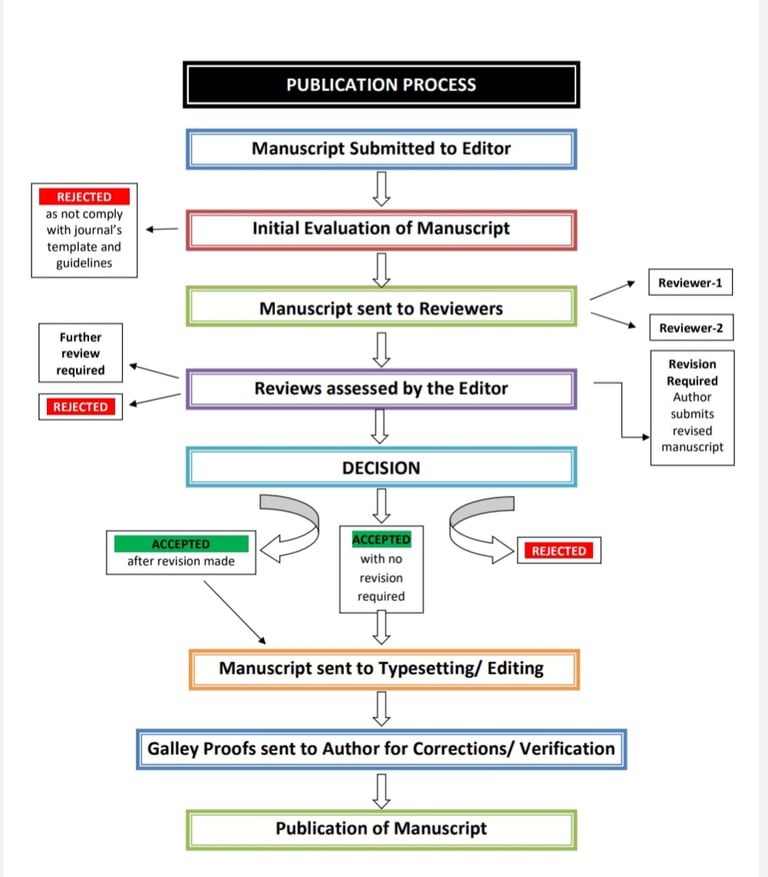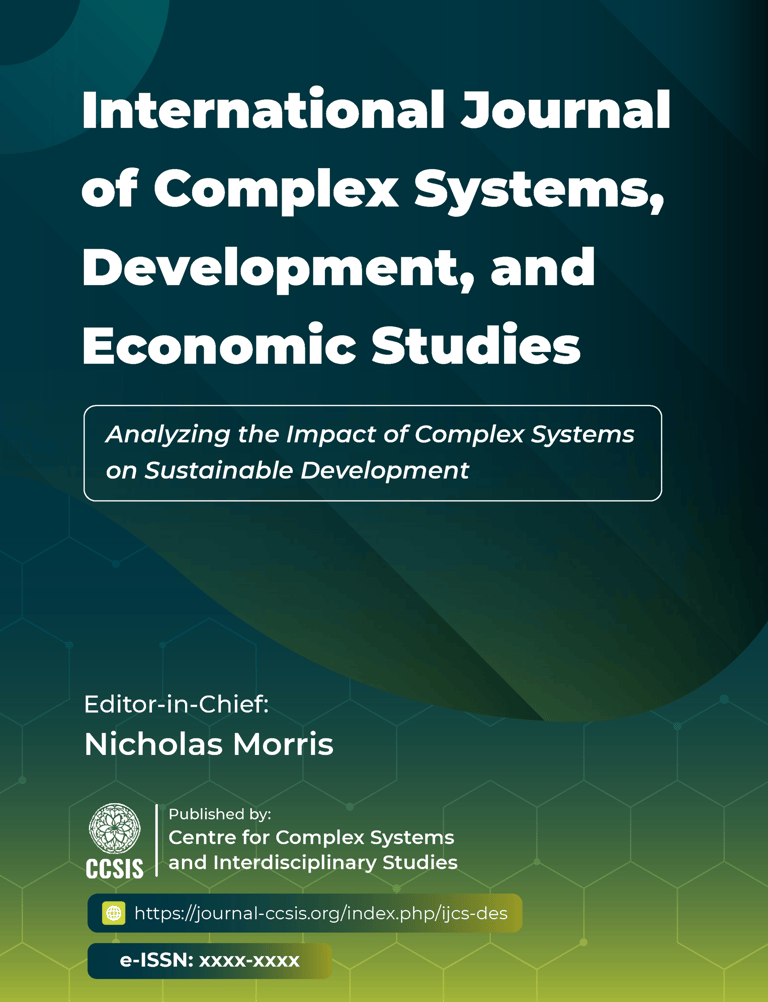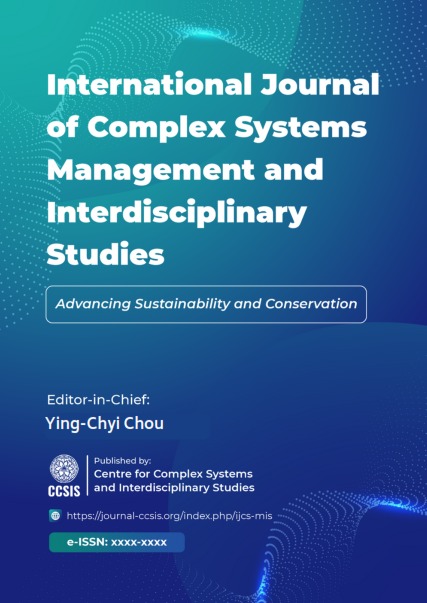Selection Criteria
The Centre for Complex Systems and Interdisciplinary Studies (CCSIS) will publish the International Journal regularly. Focused on approaching problems from a complex systems perspective, we hope this will be an impactful initiative. Moreover, it can serve as "a platform" for disseminating research addressing complex systems' multifaceted nature and promoting interdisciplinary collaboration.
Applications in Research, Complexity science is used in fields like:
Economics (market dynamics, financial crises)
Sociology (social networks, migration patterns)
Environmental science (climate change models)
Engineering (resilient infrastructure)
Public policy (Law, urban planning, Development Studies, entrepreneurship, pandemic response):
Major Types of Public Policy:
1. Economic Policy
Fiscal policy (taxation, government spending, budget deficits/surpluses)
Monetary policy (interest rates, inflation control, money supply)
Trade policy (tariffs, trade agreements, export/import regulations)
Industrial policy (support for specific industries, state-owned enterprises)
2. Social Policy
Education policy (schooling, curriculum, funding, higher education access)
Health policy (universal healthcare, insurance systems, vaccination programs)
Housing policy (public housing, subsidies, urban planning)
Welfare policy (social security, unemployment benefits, pensions)
Labor policy (minimum wage, workplace safety, union rights)
3. Environmental Policy
Climate policy (emission targets, carbon pricing, renewable energy)
Conservation policy (forests, biodiversity, marine resources)
Pollution control (air quality, water safety, waste management)
Sustainable development (green infrastructure, circular economy)
4. Security and Defense Policy
National defense (military spending, alliances, territorial security)
Public safety (policing, emergency response, disaster risk reduction)
Cybersecurity policy (data protection, cybercrime prevention)
5. Foreign Policy
Diplomatic relations (alliances, international cooperation, treaties)
Development aid (foreign assistance, humanitarian aid)
International trade and investment (FDI, WTO participation)
6. Infrastructure and Technology Policy
Transport policy (roads, ports, airports, railways, public transit)
Energy policy (electricity, oil & gas, renewables, nuclear)
Digital policy (ICT development, internet governance, data privacy)
Urban development (smart cities, zoning, urban planning)
7. Governance and Institutional Policy
Legal and judicial policy (rule of law, justice reform, human rights)
Administrative policy (bureaucracy reform, decentralization)
Anti-corruption policy (transparency, accountability mechanisms)
8. Cultural and Identity Policy
Language and education policy (official languages, indigenous rights)
Religion and cultural heritage (protection of traditions, religious freedom)
Arts and media policy (creative industries, entrepreneurship, censorship, media freedom, etc)
Editorial Board
Prof. Yuta Hirayama, Osaka Metropolitan University Japan.
Dr. Sylvain Baumann, University of Le Havre-Normandy, France.
Mr. Vasu Srivibha, Sasin University, Thailand.
Prof. Nick Morris, La Trobe University, Australia.
Prof. Jerry Chi, Andrew University, USA.
Dr. Dan LeClair, GBSN, New York, USA.
Prof. Dorothée Baumann-Pauly, University of Genève, (UNIGE), Switzerland.
Prof. Samuel Grandval, University of Le Havre-Normandy, France.
Prof. Ying-Chyi Chou, Overseas Science and Technology Division-NSTC, Belgium.
Prof. Wu Chih-Yun, Tunghai University, Taiwan.
Prof. Jan Veuger, Saxion University, Netherlands.
Prof. Hernando Gil Tovar, Universidad Surcolombiana, Neiva, Colombia.
Dr. Jaka Aminata, Universitas Diponegoro [UNDIP], Indonesia.
Dr.Sami Al-Daghistani is an Associate Professor in Contemporary Islamic Studies at Lund University, Sweden.


Some general criteria and steps that should be consider:
Quality and Originality: Your research must be original, scientifically accurate, and contribute new knowledge or insights to your field. It should adhere to the highest standards of research integrity.
Peer Review Compliance: The journal you choose should follow a rigorous peer review process to ensure the quality and validity of your work. This process is critical for accepting your research in the academic community and for inclusion in Scopus.
Adherence to the Journal’s Scope: Your research must align with the aims and scope of the journal you are submitting to. Each journal has specific thematic and disciplinary focuses, and your work should fit within these parameters.
Formatting and Guidelines: Follow the journal's specific author guidelines and formatting requirements. These guidelines cover various aspects, including manuscript structure, reference style, and figure preparation.
Ethical Considerations: Ensure that your research complies with ethical standards concerning research methodology, consent (if applicable), and authorship. Many journals require explicit statements regarding ethical compliance.
Language and Clarity: The manuscript should be written in clear, academic-level English (or the language of publication for the journal) to ensure that it is accessible to the international academic community.
Focused on approaching problems from a complex systems perspective means:
Interconnectedness and Interdependence: Every part of the system is connected to and can affect other parts. Changes in one area can have cascading effects throughout the system.
Emergence: The behavior of the system as a whole can be more complex and different from the sum of its parts. New properties and behaviors emerge from the interactions between the system's components that cannot be predicted by analyzing each component in isolation.
Adaptation and Evolution: Complex systems often have the ability to adapt or evolve in response to changes in their environment. This adaptive behavior can alter the system's structure and function over time.
Feedback Loops: Feedback mechanisms play a crucial role in regulating system behavior. Positive feedback loops can amplify changes, potentially leading to exponential growth or collapse, while negative feedback loops can stabilize the system.
Nonlinearity: Relationships within the system are often nonlinear, meaning small changes can have disproportionately large effects. This can lead to unexpected behavior, especially in the presence of tipping points or thresholds.
Dynamics and Fluctuations: Complex systems are dynamic, with their state constantly changing over time. They can exhibit periods of stability and rapid change, and their behavior can be difficult to predict over long time scales.
Perspective and Scale: The behavior and characteristics of complex systems can vary significantly depending on the perspective or scale at which they are observed. Understanding a system often requires examining it at multiple scales.
Moreover, it means employing a holistic approach to problem-solving that considers the broader context, explores multiple potential impacts, and anticipates unintended consequences. It often involves interdisciplinary research and collaboration, as understanding complex systems can require integrating knowledge from various fields. Techniques such as systems modelling, simulation, and network analysis are commonly used. Approaching problems with a complex systems perspective is particularly relevant in ecology, economics, social sciences, and engineering, where systems are inherently complex and interwoven. It can lead to more sustainable and practical solutions by acknowledging and leveraging the complexity of real-world systems.
Approaching problems from a complex systems perspective doesn't exclude linearity; however, it places a greater emphasis on recognizing and dealing with non-linear relationships and dynamics that are common in complex systems. Linear thinking, where cause and effect are directly proportional and predictable, can be a useful simplification in some contexts but often needs to capture the full range of behaviors in complex systems. Here's how linearity fits within a complex systems perspective:
Inclusion of Linearity:
Simplification and Models: Linear models can be valuable for simplifying more complex dynamics, especially in the early stages of understanding a system or when interactions are weak enough to approximate linear. They can provide a starting point for analysis or serve as a baseline against which to measure non-linear effects.
Subsystems Analysis: Within a more extensive complex system, subsystems or components might behave linearly or be approximated as linear under certain conditions. Identifying and understanding these linear components can be crucial for building more comprehensive models of the entire system.
Linear Elements in Non-linear Systems: Even in predominantly non-linear systems, some relationships or interactions may effectively be linear over specific ranges or scales. Recognizing these can simplify analysis and intervention strategies.
Context and Limitations:
Non-linearity as a Core Feature: The core of a complex systems perspective is acknowledging that many interactions and feedback loops within the system are non-linear, meaning that effects are not proportional to their causes. This can lead to behaviors such as tipping points, emergent phenomena, and chaotic dynamics that cannot be understood through linear analysis alone.
Adaptation and Evolution: Complex systems often exhibit adaptive and evolutionary behaviours that are inherently non-linear, as small mutations or changes can lead to significant evolutionary shifts or adaptations over time.
Predictability and Control: One challenge with non-linearity is that it can make systems less predictable and harder to control using linear methods. This necessitates a more nuanced approach to intervention, often focusing on resilience, adaptability, and the ability to navigate uncertainty.
Briefly, while a complex systems perspective emphasises the importance of non-linear relationships and emergent phenomena, it does not entirely disregard linearity. Instead, it recognises that linear models and thinking can be helpful to in specific contexts or as components of a more comprehensive analysis. Still, it also requires a broader consideration of the system's dynamics, including inherently non-linear ones.
The key points:
Non-linear relationships and emergent phenomena are central to complex systems. Non-linear relationships imply that system input changes don't lead to proportional output changes. This can lead to behaviors such as rapid growth, crashes, or unexpected outcomes that cannot be predicted by simply analyzing the individual parts of the system. Emergent phenomena refer to complex outcomes and behaviors arising from simple interactions among the system's components, which could not be anticipated by examining those components in isolation.
Linear models and thinking refer to approaches where input changes are assumed to result in proportional and predictable changes in outputs. This kind of thinking is straightforward and effective in systems or situations where the relationships between cause and effect are direct and unambiguous.
The statement recognizes that linear approaches can be helpful in specific contexts within the study of complex systems. This can include:
Simplifying parts of the system for initial analysis.
Modeling specific aspects of the system where linear approximations are valid.
Serving as a comparative baseline to understand the degree and impact of non-linear dynamics.
However, a comprehensive understanding of complex systems requires going beyond linear thinking. This involves:
Considering the broader dynamics of the system, including feedback loops, thresholds, and interactions among components that lead to non-linear and emergent behaviours.
Using tools and approaches suited to capturing and analyzing these complex dynamics, such as systems modeling, network analysis, and simulation.
In essence, this perspective suggests a balanced approach to analysing complex systems. It involves leveraging linear models where they are helpful and appropriate, but also recognizing and embracing the complexity and non-linearity that are inherent in many real-world systems. This balanced approach enables a deeper understanding of complex systems and more effective strategies for intervention, management, or study.
Contact Us
Contact us for inquiries or feedback
Get in touch
Socials
Subscribe to our newsletter
Copyright ©2024-2025 by Society of Complex Systems and Interdisciplinary Studies ║ International virtual Office: érables 94470, Boissy St Leger, France. Bank Address: Avenue Louise 54, Brussels, 1050, Belgium.




